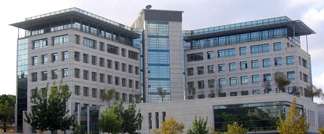Technion-Israel Institute of Technology developed device uses breath to detect lung cancer
With lung cancer a leading cause of death, more efficient detection methods could make a difference
A cancer detection device that looks for malignant tumors by analyzing a patient's breath is set to be commercialized following a study on the Technion-developed "NaNose" system that proved 90 percent accuracy
A chip at the center of the device, which looks like a Breathalyzer, detects a special "odor" created by cancer cells. The NaNose system can detect both benign and malignant tumors faster and cheaper than can other detection technologies, said Dr. Hossam Haick of the Technion - the Israeli Institute of Technology - the Times of Israel reported
“Current cancer diagnosis techniques are ineffective and impractical.” NaNose technology, he said, “could facilitate faster therapeutic intervention, replacing expensive and time-consuming clinical follow-up that would eventually lead to the same intervention.” Haick and fellow researchers Nir Peled of Tel Aviv University's Sackler Faculty of Medicine and Professor Fred Hirsch of the University of Colorado School of Medicine presented the new study on the NaNose-based system at a conference in Chicago
US government statistics show that lung cancer kills more Americans annually that the next three most common cancers combined – colon, breast, and pancreatic. One of the reasons behind this statistic is that lunng cancer is difficult to detect. Early-stage lung cancer has previously only been detected through extensive analyses involving blood tests, biopsies, CT scans, ultrasounds, and other procedures. Peled stressed that “Lung cancer is responsible for almost 2,000 deaths in Israel annually, a third of all cancer-related deaths. Lung cancer diagnoses require invasive procedures such as bronchoscopies, computer-guided biopsies or surgery
Haick explained that “mostly, the patient arrives for diagnosis when the symptoms of the sickness have already begun to appear The NaNose-based device, however, needs only the patient to breath in order to take a sample and create an initial diagnosis. Lung cancer tumors produce chemicals that evaporate and produce a scent detectable by the device. In four out of five cases the device differentiates between benign and malignant growths in the lungs. The NaNose technology was licensed last year by Boston's Alpha Szenszor, which hopes to introduce the device to the market in the next several years


אין תגובות:
הוסף רשומת תגובה